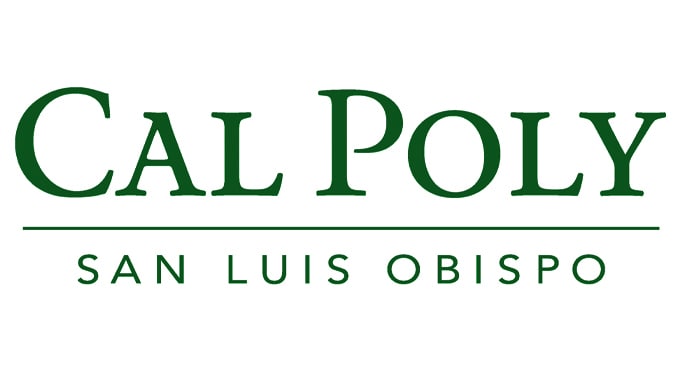
Aerospace engineering students Patrick Chizek, left, and Luke Bughman, right, work with Professor Paulo Iscold on his sail plane, which features a 93-foot wingspan.
Towed into flight by a crop duster and controlled by a renowned, record-breaking pilot, a sailplane created by a Cal Poly aerospace engineering professor and his students soared 5,000 feet over Castle Air Force Base near Merced in early March.
The plane, named Nixus (“pushing forward” in Latin), is the fourth created by Paulo Iscold, who joined the faculty last year.
“I think it gave Cal Poly a little taste of what we can do,” Iscold said. “This first step is just a small step.”
Iscold, who has been part of several speed records, is also a race engineer and team tactician for Red Bull Air Race pilot Kirby Chambliss. In that role, Iscold travels around the world with Chambliss, a former champion, competing in several international air races each year.
Iscold began working on a sailplane in his native Brazil about three years ago as a personal project. When he joined Cal Poly’s aerospace engineering faculty, he invited students to help. “I feel really proud of that,” he said.

Record-breaking pilot Jim Payne shakes hands with Aerospace Engineering Professor Paulo Iscold at the Castle Air Force Base in Merced. Payne flew a glider created by Iscold and his students
A sailplane is an aerodynamically streamlined aircraft also referred to as a glider. When aerotowed, as Nixus was, it is pulled behind a powered aircraft with a rope that the sailplane pilot releases after reaching a desired altitude.
Over a dozen students have worked on the Nixus project. Several of those students have had pilot lessons, however, this plane requires special skills to fly. “This is not a flying activity for students,” Iscold said. “It’s about engineering.”
Knowing the plane would require an expert test pilot with specific skills, Iscold called on former Air Force pilot Jim Payne. Last fall, Payne and Tim Gardner, a pilot and software architect at Hitachi Data Systems, flew an Airbus-sponsored glider 76,737 feet high. That’s the highest altitude ever reached by humans aboard an unpowered fixed-wing aircraft — only spy planes and specialized balloons have flown higher.
Five students traveled with Iscold to Merced, where they witnessed Payne’s flight and took part in the pre-flight safety briefings. “They had an opportunity to talk to one of the best pilots in the world,” Iscold said.
Zach Yamauchi, an aerospace engineering student from Truckee, California, said, “As a glider pilot who was first introduced to the sport through Cal Poly’s Soaring Club, this is by far the largest, most technical, and most hands-on club project I have been a part of during my last three years. It was incredible to see an aircraft that I had helped build take to the skies.”

The sail plane created by Cal Poly Professor Paulo Iscold and his students features a 93-foot wingspan and can travel at speeds up to 170 mph.
The plane features an impressive 93-foot wingspan. It can travel up to 170 mph, and its maximum take-off weight is 2,110 pounds. Taking several safety precautions, the flight was preceded by one day of preparation and an initial low-to-the-ground flight, towed by a car. “That way you have a feel for how the plane will behave,” Iscold said.
On the third day in Merced, Payne was towed by a crop duster and successfully flew around the Air Force base for about 25 minutes. While Iscold felt a sense of satisfaction, he said he tried to maintain his adrenaline level.
The students celebrated a little more. “A first flight doesn’t happen that often,” Iscold said.
Despite the success of that initial flight, Iscold said modifications will be made to allow the plane to fly faster with more aggressive maneuvers. The team will also hone the airbrakes and data system.
Iscold expects Payne to fly it again in a couple of weeks. And, eventually, Iscold and his team of students hope it will add to Payne’s list of broken records. “So much work is paying off now,” Iscold said.
For more information, visit calpoly.edu.

